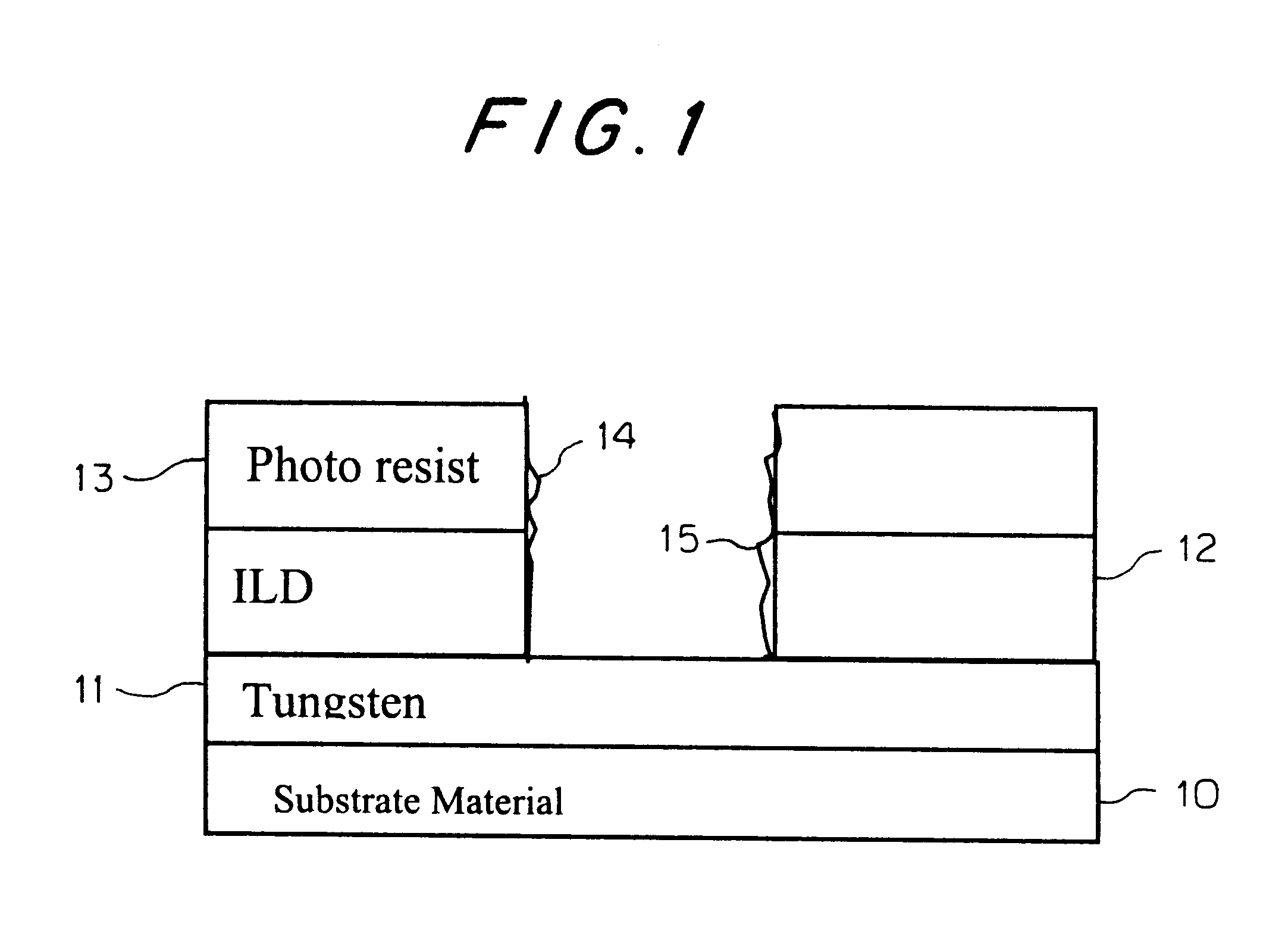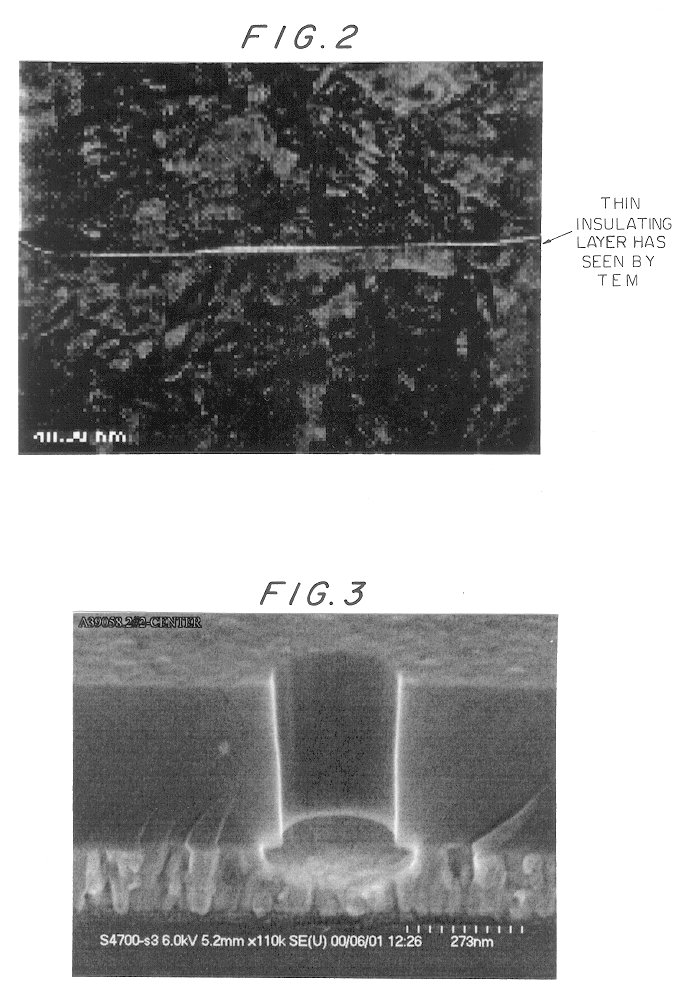Dry polymer and oxide veil removal for post etch cleaning
a technology of oxide veil and etching, which is applied in the direction of electrical equipment, decorative surface effects, decorative arts, etc., can solve the problems of veils, metal oxides, other materials to form on tungsten, and other materials to be removed during etching, and overcome the disadvantages associated with etching
- Summary
- Abstract
- Description
- Claims
- Application Information
AI Technical Summary
Benefits of technology
Problems solved by technology
Method used
Image
Examples
example
Veil Removal
Typical Tool Configuration
The veil removal is done in a vacuum chamber using microwave downstream plasma and reactive ion etching capabilities operating at radio frequencies not limited to but typically 13.56 mHz. The wafers are positioned on a heated platen for improved process control. Process gases for deveiling include fluorine based gases (CF.sub.4, NF.sub.3) and reducing gases such as forming gas (N.sub.2 [100%-X%} / H.sub.2 {X%}, argon, nitrogen or helium.
The process is restricted between two device failure criteria. First is the oxidation of the tungsten and second is the attack on the tungsten at elevated temperatures.
Boundary Condition 1: Interfacial Insulator Penetration. At high gas flows there exists a region of oxidation of the tungsten which inhibits the contact resistance from 2.times. to 1000.times..
Boundary Condition 1 is sensitive to the flow of total reactants, fluorine source (NF.sub.3 or CF.sub.4); power and clean time. This process boundary condition...
PUM
| Property | Measurement | Unit |
|---|---|---|
| temperature | aaaaa | aaaaa |
| power | aaaaa | aaaaa |
| power | aaaaa | aaaaa |
Abstract
Description
Claims
Application Information
 Login to View More
Login to View More - R&D
- Intellectual Property
- Life Sciences
- Materials
- Tech Scout
- Unparalleled Data Quality
- Higher Quality Content
- 60% Fewer Hallucinations
Browse by: Latest US Patents, China's latest patents, Technical Efficacy Thesaurus, Application Domain, Technology Topic, Popular Technical Reports.
© 2025 PatSnap. All rights reserved.Legal|Privacy policy|Modern Slavery Act Transparency Statement|Sitemap|About US| Contact US: help@patsnap.com



